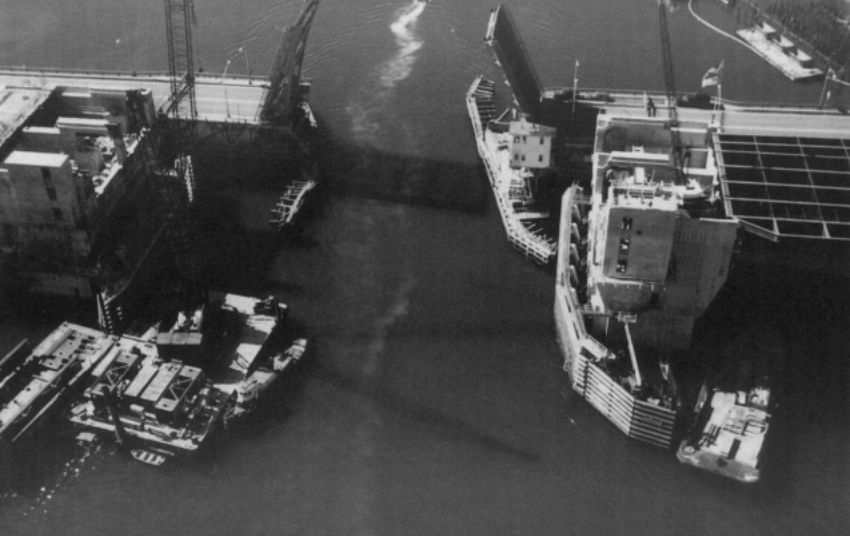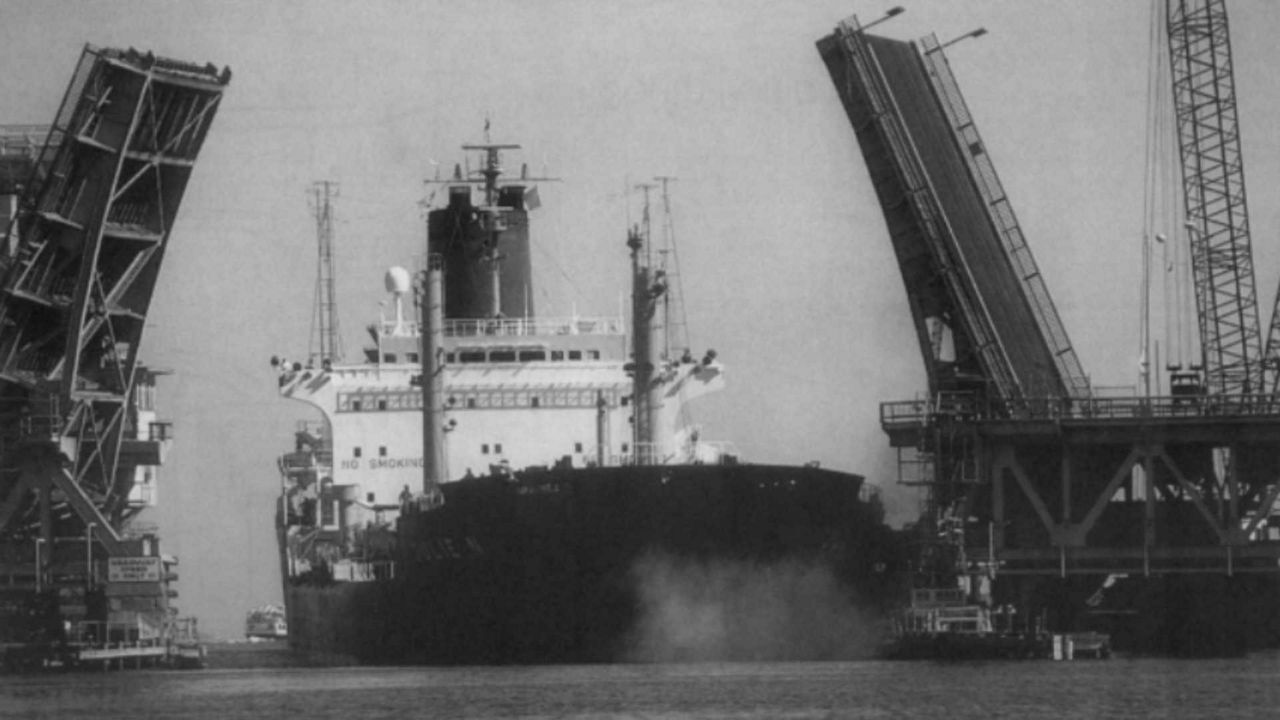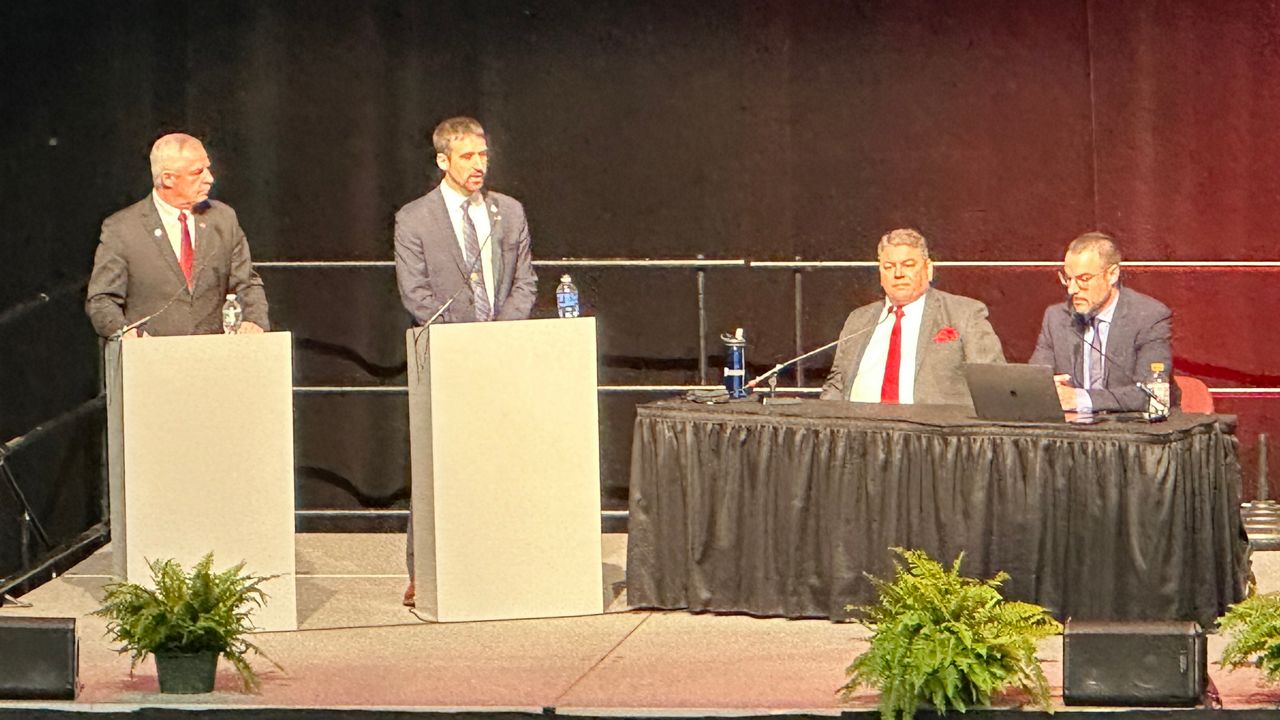State and federal officials in Baltimore are combing over the wreckage of the Francis Scott Key Bridge, which collapsed after being struck by a container ship early Tuesday morning.
Nearly 30 years ago, a bridge spanning Portland Harbor suffered a similar collision, but with a very different outcome.
On Tuesday, Maryland Gov. Wes Moore told reporters that the vessel’s crew broadcasted a mayday prior to the crash, indicating the ship had lost power. "The preliminary investigation points to an accident," Moore told the Associated Press.
Despite the warning, Maryland Transportation Secretary Paul Wiedefeld told reporters Tuesday that eight people were on the bridge at the time of its collapse. Two of those people, he said, were pulled safely from the water. The other six, believed to be part of a construction work detail repairing potholes on the bridge, were still unaccounted for as of Wednesday morning, the AP reported.
No one was hurt in the 1996 incident in Portland, but it did involve an oil tanker, the Julie N. of Liberia, striking the supports of the Portland-South Portland Bridge, also known as “the million dollar bridge.” The impact caused hundreds of thousands of dollars in damage to the bridge and led to millions of dollars in cleanup costs from an oil spill.
That accident was caused by human error. And the bridge was already set to be replaced by the Casco Bay Bridge that opened a year later.
The tanker, carrying a load of heating oil from Venezuela, struck the bridge at 11:05 a.m., according to a 1998 report on the incident filed by the National Transportation Safety Board. The bridge, which dated back to 1893 and served as a key road traffic conduit between Portland and South Portland, was due for replacement.
The Casco Bay Bridge, which spans the bay today, was under construction right next to the Million Dollar bridge at the time of the tanker crash and would open in 1997.
On the morning of the crash, the Julie N’s pilot, according to the NTSB, was trying to thread the tanker through the narrow gap between the Million Dollar bridge’s two support pylons on either side of the bay.
As the tanker drifted toward the pylon on the Portland side, the NTSB wrote, the pilot correctly ordered the ship to turn to port, or the left side. This made the vessel drift toward the South Portland side.
The pilot was then supposed to order “hard starboard,” or to turn the ship to the right, thus straightening it out and passing through safely.
“However, the pilot inadvertently ordered the rudder to hard port instead of hard starboard,” the NTSB wrote. “He recognized his error within seconds and ordered the rudder to hard starboard; given the narrowness of the bridge span, however, the shifting of the rudder occurred too late to avoid the collision.”

(Aerial photograph of old and new bridges. Credit: NTSB)
The bridge’s initial construction left only 100 feet of space between the pylons for passing ships. Over the years, various renovations thickened the fenders, or material surrounding the pylons, narrowing the width to as little as 97 feet four inches in 1949.
The NTSB report acknowledges that further changes had been done to the bridge in the following decades, but “no channel width data were given with the changes.”
The Julie N, according to the NTSB report, had a beam of 86.3 feet, which meant the tanker, under ordinary circumstances, would have had, at best, less than six feet of clearance on each side while passing under the bridge.
“Contributing to the accident was the narrow horizontal clearance of the bridge drawspan, which afforded little leeway for human error,” the NTSB wrote in its report.
Unlike the Baltimore accident on Tuesday, the Julie N glanced off first one then the other pylon as it drifted under the bridge. In the video on Tuesday, the cargo ship Dali is visible striking the Baltimore bridge support nearly head-on.
The Maine Department of Transportation, on Sept. 28, 1996, assessed that $32,000 in repairs could get the bridge “functioning again” by Sept. 29, 1996.
A month later, however, an additional $200,000 in repairs were necessary, leading to a total bill of $232,000 in 1996 – more than $466,000 in today’s dollars.
There was an environmental cost, too. The crash tore a 33-foot hole in the tanker’s hull below the water line. According to the NTSB, the tanker dumped about 4,000 barrels of oil” into the harbor. At a standard 42 gallons per barrel, the spill totaled about 168,000 gallons, or a little more than one-third the capacity of an Olympic-sized swimming pool. The spill cost about $43 million at the time to clean up, or more than $85 million today.
The NTSB addressed the width of the waterway under the new Casco Bay Bridge in its 1998 report, noting that it had an opening between its supports of 196.85 feet.
“The increased horizontal clearance and the improved fender system at the new bridge have greatly improved safety for the class of vessels that normally would have transited the old bridge and should reduce the likelihood of the bridge being struck by similar class vessels,” the NTSB wrote.









)